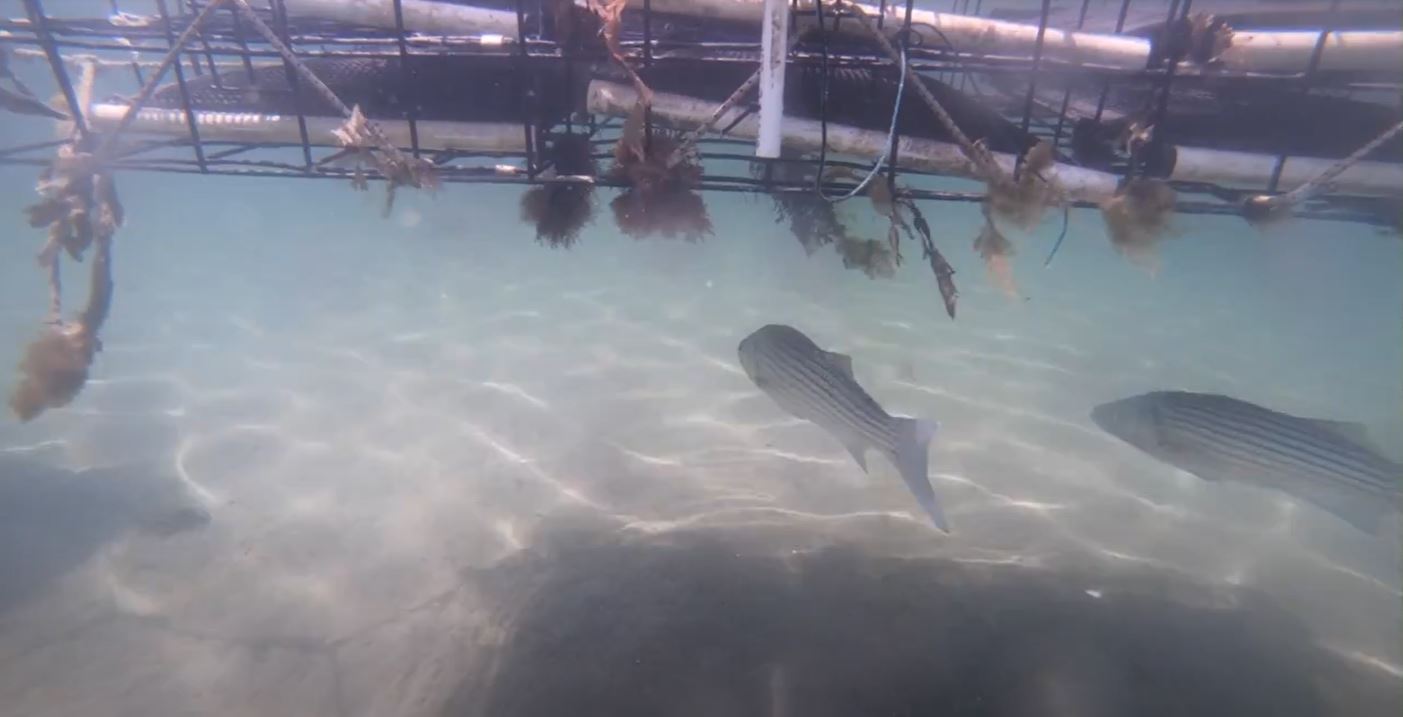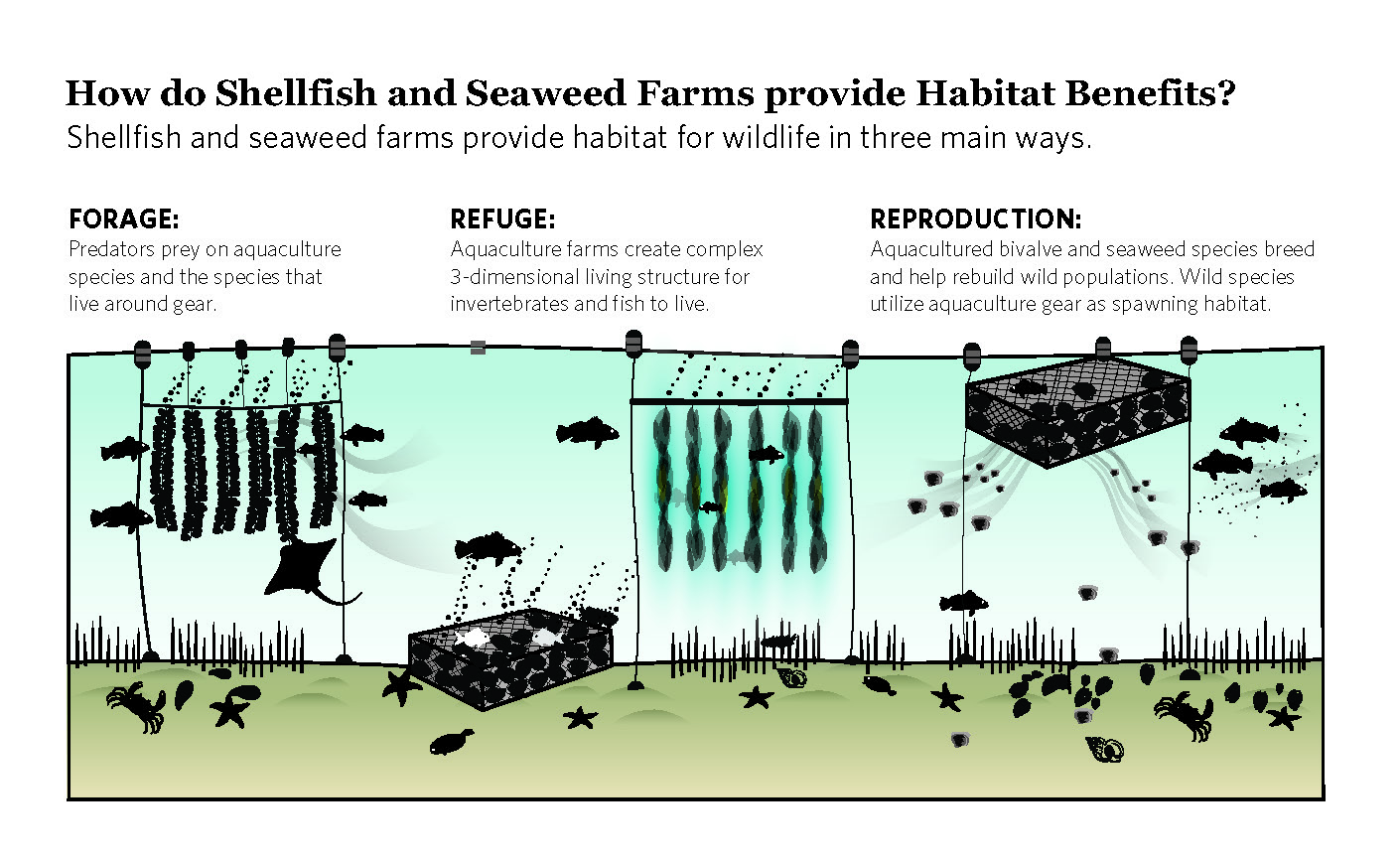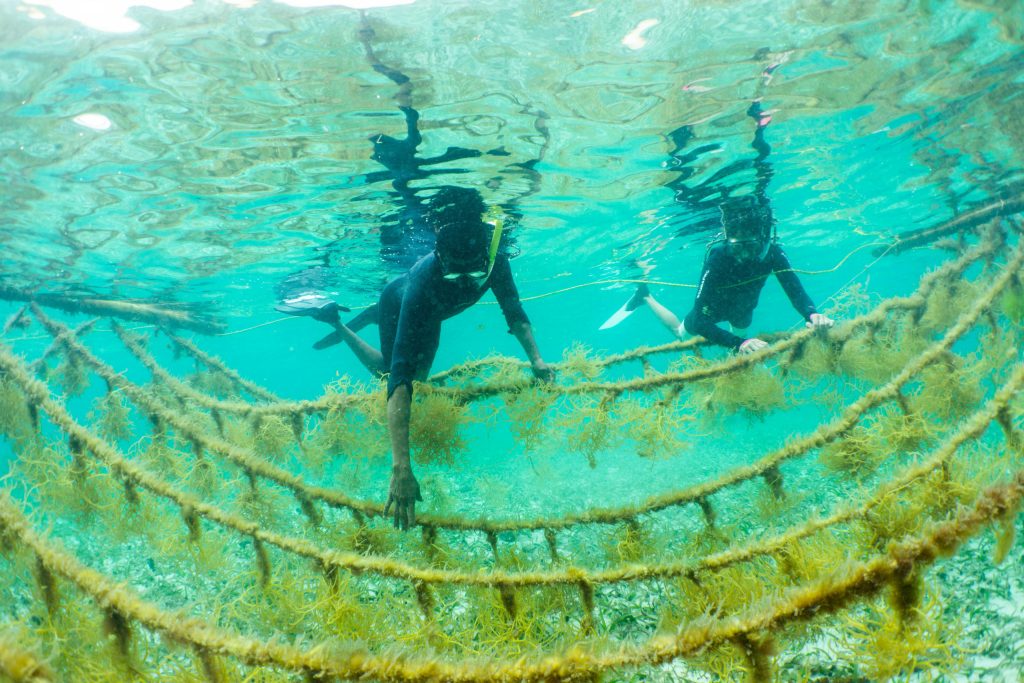Bivalve and seaweed farming systems result in measurable increases in fish and invertebrate abundance and diversity, new research from The Nature Conservancy, University of New England, University of Melbourne, and the University of Adelaide finds.
The Gist
In the first comprehensive global review of studies quantifying the habitat benefits of mussel, oyster, clam, and seaweed farms, scientists found that these food production systems had a positive impact on marine habitat value in comparison to sites without farms. However, different aquaculture species and farming methods provided different outcomes. Aquaculture of bivalves – two-shelled animals like mussels, oysters, and clams – seems to provide habitat more effectively than aquaculture of seaweeds, though there is less research available reflecting the impact and benefits of the highly diverse seaweed farming methods and species.
“Unfortunately, aquaculture can have a history of mismanagement. With better research and understanding, we are beginning to recognize the full scope of benefits from aquaculture such as shellfish and seaweed farming, which will advance/improve our planning and practices” says Tiffany Waters, TNC’s Global Aquaculture Manager.

The Big Picture
These findings are critical to rethinking how food production systems can provide for human needs, while also providing benefits for the environment. Fish consumption and the aquaculture industry are the fastest-growing protein choice for diet and food production system in the world right now, respectively. At the same time, over 90% of our wild fish stocks are overfished or fully exploited. There is an urgent need to scale solutions that can provide seafood that is protein-rich, nutrient-dense, and accessible, but doesn’t harm ecosystems, to growing populations. This research found that not only do seaweed and shellfish farms typically have lower environmental impacts, or ‘footprints’, they might often add value.
Authors of this study point out that while strong planning on a farm scale is critical to responsibly creating habitat through aquaculture, policy can be a vehicle for change at larger scales. Conservation efforts, such as marine protected areas, historically have restricted opportunities for shellfish and seaweed aquaculture due to concerns for environmental impacts, but this research suggests that well-managed farms could in fact help achieve the intended conservation goals of these efforts. Innovative collaborations between state or local governance and the people affected by such policies can lead to new ways of thinking about, and managing, both the social and environmental aspects of seaweed and shellfish aquaculture.

The Takeaway
Overall, bivalve and seaweed aquaculture was associated with both a higher relative abundance and species richness of wild mobile macrofauna. The species cultured did not significantly predict increases in abundance, but did predict increases in species richness, with richness being highest at oyster farms. Bivalve farming generally supported the highest density of mobile macroinvertebrates, and mussel and oyster farms, particularly those that were suspended or elevated, yielded the largest increases in species abundance and richness respectively.
The habitat value provided depends, however, on the interaction of local environmental conditions, intensity and scale, gear utilized, species cultivated, and farm management practices. To avoid negative impacts from overcrowding or oversized farms, data-driven, science-informed aquaculture siting and analysis of the above factors is necessary.
In spite of these caveats, the paper demonstrates a vast potential for food production in harmony with ocean ecosystems. “We want to better understand how food production can go beyond the reduction of impact and actually provide benefits to the ocean,” says Robert Jones, TNC’s Director of Global Aquaculture and one of the paper’s authors. “We can work towards the UN sustainable development goals of zero hunger and protect, or better yet restore our oceans at the same time. This research is a significant step forward in demonstrating that aquaculture practices that provide environmental benefits and have a restorative effect – restorative aquaculture – can help meet these goals.”
References:
Seth J. Theuerkauf, Luke T. Barrett, Heidi K. Alleway, Barry A. Costa-Pierce, Adam St. Gelais, Robert C. Jones. (2021). Habitat value of bivalve shellfish and seaweed aquaculture for fish and invertebrates: Pathways, synthesis and next steps. Reviews in Aquaculture, 1–19.



